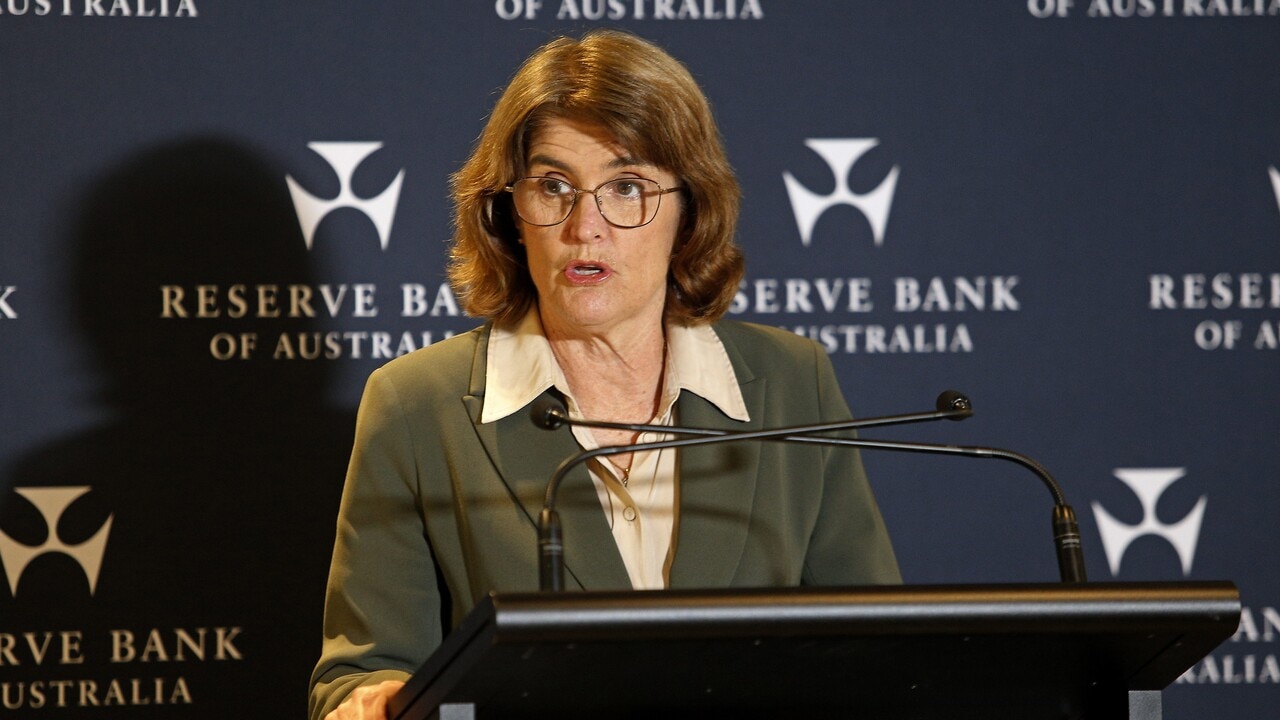Weakening jobs market doesn’t justify Reserve Bank rate hold, says labour expert
As Sally McManus heaps pressure on Michele Bullock to deliver relief, Australia’s top labour market expert warns the Reserve Bank is overestimating the strength of the country’s jobs market.

The Reserve Bank is overestimating the strength of the country’s jobs market and its weakness doesn’t justify keeping interest rates on hold, Australia’s top labour market expert has warned.
The assessment from Melbourne University economics professor Jeff Borland comes as the RBA’s board on Monday convened for its final two-day meeting of 2024, with ACTU secretary Sally McManus heaping pressure on its governor, Michele Bullock, to deliver interest rate relief.
“We want them to see the faces of ordinary Australians who have been put under pressure because they are keeping interest rates too high for too long,” Ms McManus said outside the central bank’s Sydney headquarters, joined by a throng of union members.
“It’s wrong for the Reserve Bank to want unemployment to go up before they can start cutting interest rates. Their job is to ensure full employment.”
The display at the RBA’s Sydney headquarters represents a significant escalation of tensions between the RBA and the labour movement.
While the RBA currently views the labour market as beyond so-called “full employment” and adding to inflation, Professor Borland said conditions were likely far weaker and supported by bumper growth in so-called non-market jobs that are predominantly funded by the taxpayer.
“Conditions in the labour market may soon be worse than they should be, if they are not already in that position,” he said, adding the circumstances did not warrant the RBA keeping the cash rate at a 12-year high of 4.35 per cent.
The growing share of government-aligned employees in the workforce has been a trend of the past two decades. However, jobs in health, education and the public service have surged in the past two years, climbing to more than 31 per cent of total employment.
Had government-aligned jobs grown at the same rate as jobs in the private sector, the number of employed Australians would have been 692,000 lower in September than their current levels, Professor Borland estimated.

Further indicating weakness in the jobs market was the current level of wages growth, which Professor Borland deemed was not excessive, as government-aligned jobs had a “built-in protection” that stopped them from generating inflation. Despite the economy’s run of anaemic productivity growth, Professor Borland said the trend was due to “transitory” changes in the jobs market, even as the elevated unit labour costs – the difference between productivity and wages growth – raise concerns for the RBA.
“Trying to counteract the impact of labour productivity on unit labour costs therefore runs the risk of jumping at a shadow,” Professor Borland wrote.
The intervention by Ms McManus from within the labour movement could prove to be a headache for the Treasurer, who has repeatedly stressed the RBA’s independence in recent months despite previously accusing the RBA of “smashing the economy” via its aggressive run of rate hikes.
Seizing on Ms McManus’s demands, opposition Treasury spokesman Angus Taylor claimed Dr Chalmers was trying to press the RBA to cut interest rates via the union movement.
“Jim Chalmers has been caught jawboning the Reserve Bank in the past, and it’s hardly surprising that this week he’s sent his political allies to do his bidding for him,” Mr Taylor argued. “It’s clear he will continue to undermine (the RBA) at every turn.”
In response, a spokeswoman for Dr Chalmers rebuffed Mr Taylor’s claims, arguing he was “just throwing rocks” after having “vacated the field on the economy”.
The RBA will announce its final interest rate decision of the year on Tuesday, with Ms Bullock set to address reporters an hour later to explain the central bank’s reasoning behind its decision.
Additional reporting: Summer Liu




To join the conversation, please log in. Don't have an account? Register
Join the conversation, you are commenting as Logout